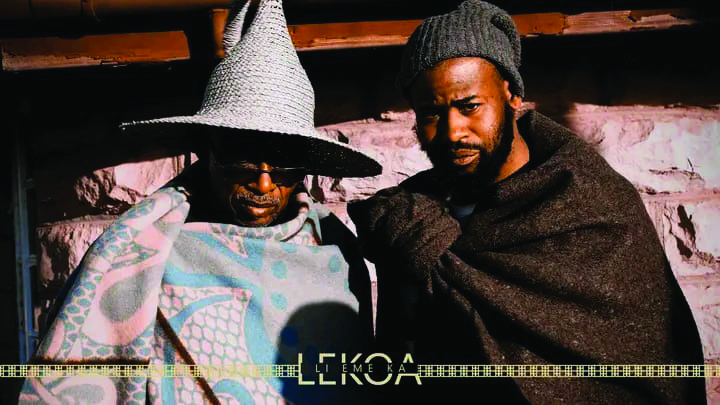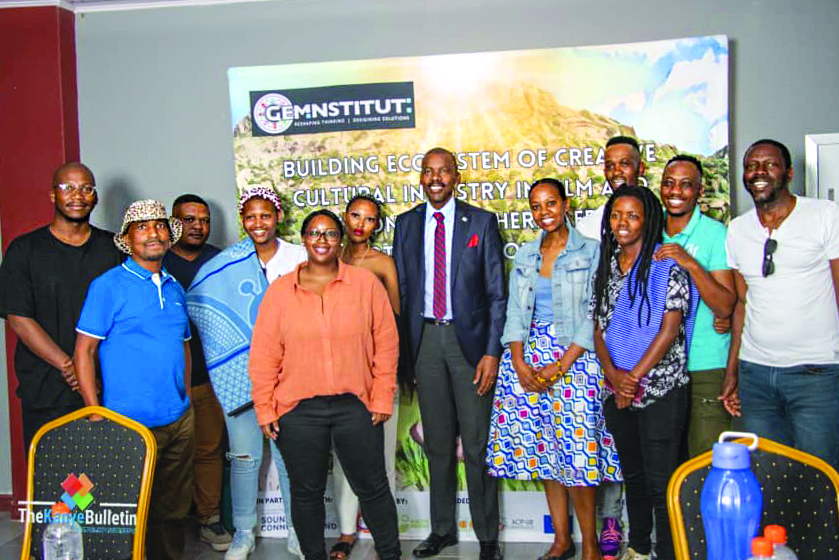Motsamai Mokotjo
The issue of gender and inheritance is intricately woven into the first feature film, Li Eme ka Lekoa, which stars Tlhalefo Mohasoa as Princess ‘Masentle and Lereko Phakisi as Prince Khama.
According to its synopsis, the film tells the compelling story of a daughter who, upon her father’s death, faces the traditional barrier of being unable to inherit his chieftainship.
The film delves into the impact of traditional practices on contemporary life in the region, provoking critical reflection on the place of women in leadership roles.
Speaking with Newsday this week, Mohasoa emphasized the importance of equality for girl children in leadership, stating, “I believe we should practice equality; patriarchy has no place in our society.” She added, “People are often surprised that a woman can be a car mechanic, which I am.”
For Mohasoa, this was her first time acting or being in front of a camera, a challenge made easier by the support of experienced professionals around her.
“It was intimidating, but I had the support of the team. I put a lot of pressure on myself to deliver.” She added, “I auditioned like everyone else and was given the role. I’m not sure what the casting team saw in me.”
Her co-star, Phakisi, echoed her sentiments on equality, asserting, “Girls should not be discriminated against when it comes to leadership. The real issue is that we are equal; leadership should not be based on gender, but on the quality of leadership we bring to our communities.”
On the issue of language since the ouvré is a concoction of Sesotho and Setswana, he indicated that it was a bit challenging for him to articulate the former in its purest form.
“I was lucky in that I have a history of having visited Botswana even before I even auditioned for the film.
“There’s a huge difference between Pretoria-based Setswana and one spoken in Botswana; for me as a Mosotho, I had to also learn that Sepedi, and though similar in some ways, they slightly vary,” he noted.
For his part, the director, Boikarabello Michael Motaung, echoed Phakisi’s stance, going further to indicate that “there is a strong clash of ideologies in this film and everyone wants his side to be heard, which is a challenge, and the dialogue reaches a breaking point.”
“This film was inspired by the story that happened at Ha ‘Mamathe, where the daughter of the principal chief was sidelined after the death of her father and had to fight for the chieftaincy; she even went as far as taking the matter to the constitutional court because everyone was saying the chieftaincy of Lesotho is run by the customary law; we all know how the story played out, so making this film was a reflection of where we are as a nation,” Motaung said.
Themes development was a keenly observed aspect, as articulated by the director; thus, he said they had to do groundwork in researching issues of heritage.
“…we had to do some research, as this is a traditional story, so firstly it was a question of addressing the theme and what we want to achieve, taking into account the position of women in our society. Now that the world is changing fast and women are taking prominent roles, where are we as a nation? So research was paramount in doing this picture.”
On the issue of character treatment, Motaung said they had to hold auditions in the bid to find crème de la crème; hence, “we had to take her [Mohasoa] through some rehearsals and make her understand the type of story we are telling; of course all characters in the picture undergo some form of development because of how the story is structured and what is expected of them.”
“From the inception of the story, we know that this has to be told in Sesotho regardless of our main character’s educational background, which was important to be highlighted. The only aspect of dialogue that needed crafting was the tone of language that needed to be applied, especially with the chief’s council, how they speak, and so forth, because the film itself is dialogue heavy, so attention was to be given on the dialogue given the psychology of the characters,” Motaung indicated when asked about the style of dialogue in the film.
The director further indicated that there were challenges specifically finding locations for certain scenes; “[however] we tried to make sure that all locations are easily accessible, but that was a challenge because of how we wanted the story to look; at some point we had to compromise without hurting the story. And then, of course, the crew was not that big due to financial constraints, but we did our best to come up with the product we have.”
Summary
- On the issue of language since the ouvré is a concoction of Sesotho and Setswana, he indicated that it was a bit challenging for him to articulate the former in its purest form.
- For his part, the director, Boikarabello Michael Motaung, echoed Phakisi’s stance, going further to indicate that “there is a strong clash of ideologies in this film and everyone wants his side to be heard, which is a challenge, and the dialogue reaches a breaking point.
- We had to do some research, as this is a traditional story, so firstly it was a question of addressing the theme and what we want to achieve, taking into account the position of women in our society.

Your Trusted Source for News and Insights in Lesotho!
At Newsday Media, we are passionate about delivering accurate, timely, and engaging news and multimedia content to our diverse audience. Founded with the vision of revolutionizing the media landscape in Lesotho, we have grown into a leading hybrid media company that blends traditional journalism with innovative digital platforms.









